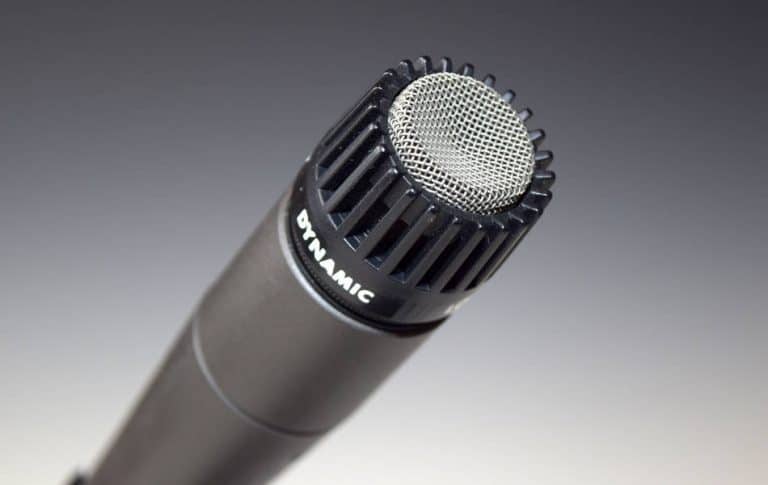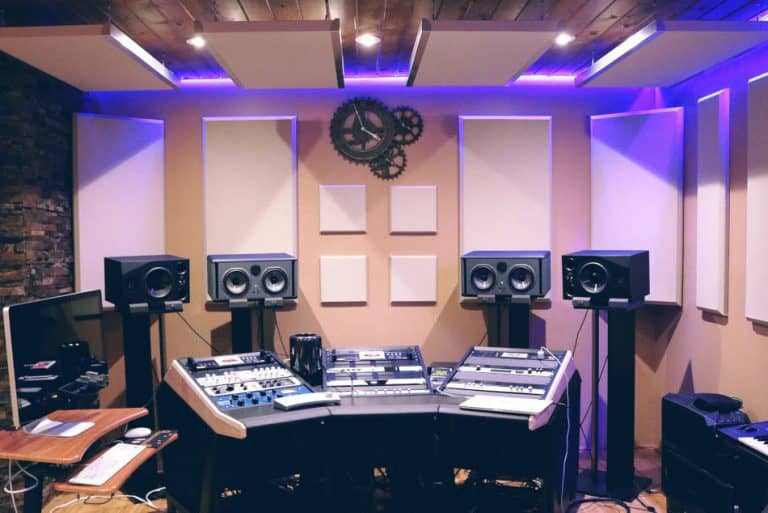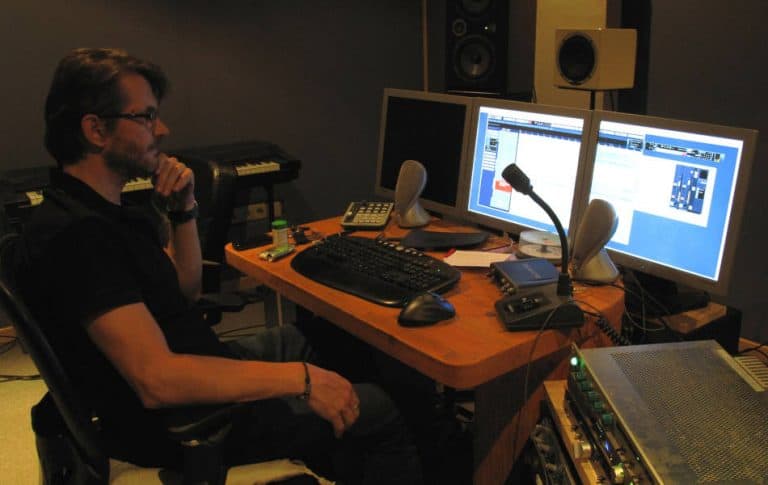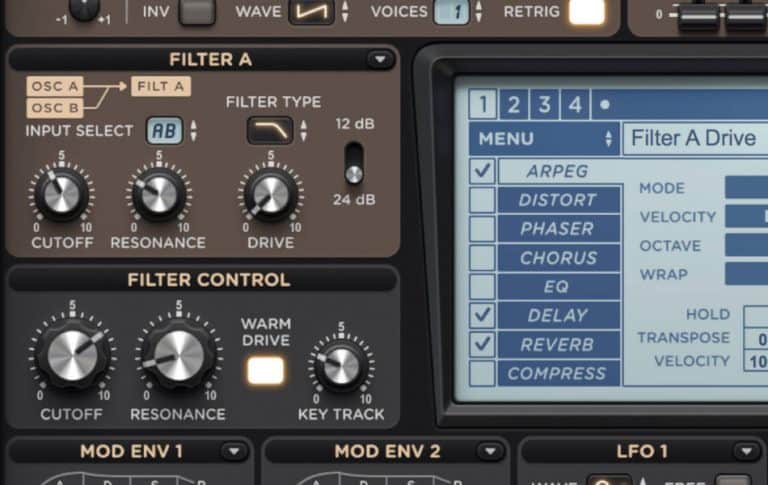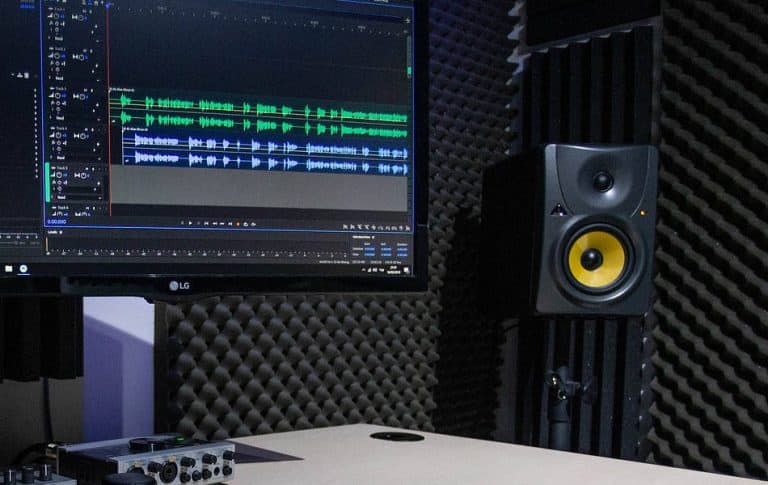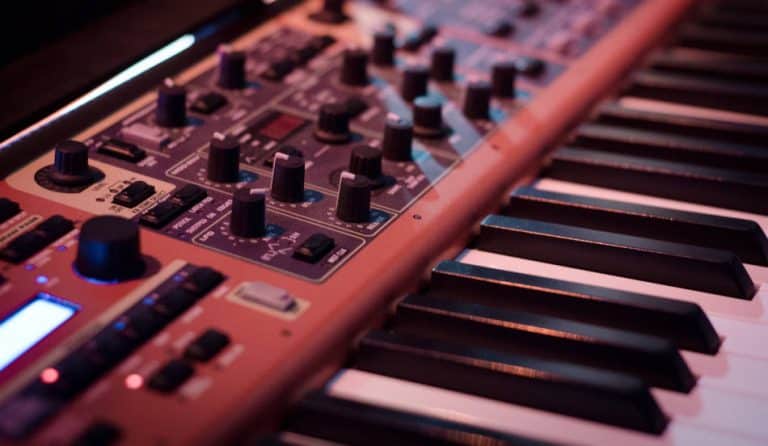Studio Monitor Speakers – 5 Things You Should Know About
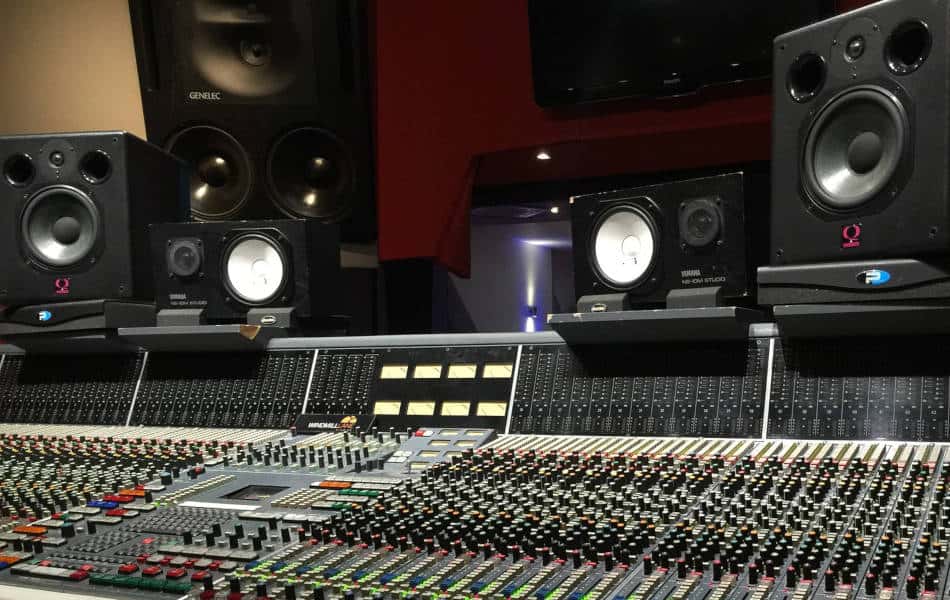
When people talk about listening to audio productions during the recording, mixing or mastering process you often hear them refer specifically to monitor speakers.
Studio monitor speakers are sometimes called studio reference speakers, and they are designed for professional audio production.
At some point you will probably want to obtain some studio monitors to use with your own productions. It can be quite difficult to know what you should be looking for when choosing monitors, and what a lot of the information and specifications actually mean.
Another confusing thing when thinking about monitor speakers is the huge price range. Monitor speakers can cost from under $100 for a pair that has built-in amplification, to more than $20,000 for a pair of speakers that don’t seem to look very different.
Here we have some information on five things that you should know about studio monitor speakers for home recording studios that you will hopefully find helpful:
- What makes a speaker a studio monitor speaker?
- The difference between active and passive speakers
- The difference between ported and non-ported speakers
- The difference between near-field and far-field speakers
- The right monitor speaker size and power for your studio space
So, let’s take a look in more detail at each of these five things you should know about studio monitor speakers.
1. What Makes a Speaker a Studio Monitor Speaker?
A studio monitor speaker could really be any speaker, or pair of speakers, used to listen to audio that has been recorded or produced in a studio.
The thing that actually produces the sound in a speaker cabinet is the speaker driver. It can be a bit confusing since people refer to the whole cabinet as the speaker, as well as the individual loudspeakers (the drivers) inside the cabinet.
Studio monitors are often defined as speakers that are specifically designed for professional audio production. The main focus when designing speakers for this purpose is that they have a “flat frequency response”.
A flat frequency response means that the level of volume level is the same across the whole range of frequencies that humans can hear, i.e. 20Hz to 20kHz (20,000 Hz).
Something to note is that smaller speakers may not be able to output sound at the lower end of the frequency range. For example, the frequency range of 5-inch speakers can stop at around 60Hz.
To picture a flat frequency response, imagine a straight horizontal line stretching horizontally from one of the the audible frequency range to the other. This is the ideal frequency response profile for a studio monitor speaker.
In practice, the sound level is not entirely flat right across the frequency range. There are slight rises or falls at one end or the other, depending on the speaker, but it’s designed to be as flat as possible.
This flat frequency response produced by studio monitor speakers is important because it lets you hear what your mix really sounds like.
When you are working on a track you need to know what sound the audio signal is actually producing so that you can make sure your finished track will sound good on any speakers.
Your track may eventually be played on high quality speakers, or car stereo speakers, or an old kitchen radio, or the headphones that come with a mobile phone. You need to know what your track’s audio signal actually sounds like to help you prepare it for all these different speaker systems.
People often ask if you can use the speakers from a home Hi-Fi system instead of proper studio monitors. I’m not sure if “Hi-Fi” is even a thing anymore, but I just mean the type of speakers you use for listening to music at home.
Hi-fi speakers are designed to “flatter” the music coming out of them and make it sound good. That’s great when you are listening to music for pleasure, but when you are working on a track you need to know what sound the audio signal is actually producing.
Using proper studio monitor speakers, with a flat frequency response, lets you hear the sound of your track, without it being modified by the speakers (or modified as little as possible).
Another thing to consider is how the monitor speakers are actually placed, and how this might affect the sound. We have looked at the use of specialised studio speaker stands in another article.
These things help you to make sure your finished track will sound good on any speakers.
2. The Difference Between Active and Passive Speakers
Studio monitors are often described as being either active or passive speakers. Sometimes they are described as powered or passive, with powered used to mean the same thing as active.
Although there is a difference between speakers described as powered or active, the thing they have in common is that they both need their own power source. Passive speakers, on the other hand, don’t need a power supply of their own.
The audio signal fed into a passive speaker needs to come via a separate amplifier. This amplified signal is then passed on to circuits inside the speaker that separates the sound into the frequencies that will be sent to the high-frequency tweeter speaker component and the low-frequency woofer speaker component.
This separation of speaker and amplifier means that passive speakers can be relatively inexpensive to produce. It also means that speakers and amplifiers can be mixed and matched, which can increase flexibility. Also, if you already have an amplifier you are happy with you only need to replace the speakers when it’s time to upgrade.
Monitor speakers that have their own power source contain a built-in amplifier. This type of speaker comes as an all-in-one unit, and there’s no need to buy a separate amplifier.
It also means that there should be no compatibility problems between the amplifier and speaker, since the manufacturer will have taken care of this.
These speakers are often referred to as powered speakers or active speakers. It sometimes seems that the two terms are referring to the same thing but there is a difference between “standard” powered speakers and active speakers.
The thing that makes the difference between active speakers and powered speakers in general is a component called the crossover. The crossover takes the signal coming in and splits it up according to frequency, with the high, mid and low frequencies being sent to appropriate speaker units (or drivers) within the speaker cabinet.
If you look at the specifications for a particular monitor speaker you will sometimes see the frequency at which the crossover splits the signal. Taking a KRK Rokit speaker as an example, the frequency range that the speaker can handle is 45Hz to 35kHz, and the crossover frequency is 2.6kHz.
In a “standard” powered speaker the crossover is “passive” and doesn’t need an additional power source to filter the incoming signal according to frequency. The crossover in an active speaker needs power to filter the signal, and this can provide you with more flexibility and lets you deal with the signal in a more refined way.
You will need to check the specifications of any powered speaker you are thinking about buying to see if it uses active or passive circuits. Don’t assume it is an active speaker just because it has its own power supply and built-in amplifier.
3. The Difference Between Ported and Non-Ported Speakers
Another potentially confusing option is whether to choose ported or non-ported (sometimes called unported) speakers.
This refers to whether the speaker cabinet is sealed (apart from the opening where the sound comes out of the speaker units, or drivers) or has one or more openings in the cabinet that lets sound come out from other places.
The non-ported sealed cabinet type of speaker is sometimes referred to as an “infinite-baffle” system. This sealed cabinet provides a theoretically infinitely large baffle (the baffle is the front face of the speaker), which isolates the sound coming out of the front of the speaker unit from the sound coming out of the back of the speaker.
One of the benefits of an non-ported (sealed cabinet) speaker is the natural sounding low frequencies and clearly reproduced mid-range sounds.
Ported speaker cabinets are sometimes referred to as reflex cabinets. In this design the cabinet contains an opening, or hole, that lets some sound come out from inside the cabinet.
This opening in the cabinet allows small speaker cabinets to produce louder bass frequencies and an overall perceived increase in volume.
This emphasis of lower frequencies with ported speakers can make it difficult to hear the different bass sounds in a mix.
The majority of monitor speakers that are likely to be used when starting off with a home studio are of the ported variety. This is because of the way they can help to increase the output level at low frequencies when using small speakers.
The overall feeling seems to be that non-ported speakers are the best at accurately reproducing the audio signal, but well-designed ported speakers can provide good results too.
4. The Difference Between Near-Field and Far-Field Speakers
The main difference between near-field and far-field speakers is in their positioning.
You will have heard the recommendation that when listening to playback of your recorded music the two studio monitor speakers should be at two of the corners of an equilateral triangle (sides same length, all angles 60 degrees), and the producers head positioned at the third corner.
In this arrangement the monitors are acting as near-field speakers. Near-field means that the speakers are placed close to the producer’s ears, usually around three feet away, both pointing towards their head.
The proximity of the speakers to the listener means that near-field speakers are usually fairly small.
Being positioned close to the listener means that what is heard is mostly coming directly from the speakers, and isn’t affected much by sound reflected of walls and surfaces in the rooms. This is because the direct signal is so much louder than the reflected signals.
This near-field listening can help to minimise the effect of the studio room on the sound. Since monitor speakers are designed to have a flat frequency response this can help to hear the actual audio signal being sent to the speakers.
You often see near-field speakers mounted on a shelf at the back of the mixing desk or on special speaker stands. The important thing is to have the speakers at the same height as the listener’s head.
Far-field monitors, as the name suggests, should be place farther away from the listener. A typical distance from the speakers to the listener is around ten feet.
Far-field speakers are usually mounted on the wall in front of the producer, or mounted on stands some distance further back than the near-field speakers.
Far-field speakers let you listen to the way the space around you affects the sound. This means that the studio, or other listening room, should be acoustically treated to minimise the type of sound distortion that can result from uncontrolled reflection of sound waves from walls and other surfaces.
5. The Right Monitor Speaker Size and Power for Your Studio Space
Having looked at the difference between near-field and far-field speakers, we should think about how to decide on the right monitor speaker size and power for your studio space.
Monitor Speaker Size
Studio monitor cabinets usually contain two speakers, or drivers: a tweeter and a woofer.
As you probably know, the tweeter handles the high frequencies. To produce high frequency sounds the tweeter needs to vibrate very rapidly, so the size is small to help with this. Tweeters are typically around one inch in diameter.
When talking about monitor speaker size it is usually the woofer that is being referred to. Woofers handle the lower frequency sounds. The woofers in studio monitors usually range between three inches and eight inches in diameter.
Larger woofers can handle lower frequencies better than smaller woofers. This means that you should probably think about the type of music you want to produce.
if you are producing music where the bass frequencies are contributing a lot to the sound then you will need to use monitors containing a woofers that can produce these low frequencies.
If you can’t hear these frequencies properly when you are mixing and mastering your music then you may be in for a nasty shock when you finally hear it on speakers that can produce bass frequencies properly.
Using information provided for inexpensive Mackie monitor speakers, five-inch diameter woofers can handle frequencies down to 60Hz, while three-inch diameter woofers only go down to 80Hz.
Since humans can hear frequencies down to 20Hz you might need to consider adding a sub-woofer to your set-up if being able to hear bass frequencies is particularly important.
Sub-woofers have a larger diameter, which lets them handle the very low frequencies. Normally you would only need one sub-woofer rather than a pair because of the way very low frequencies (below around 100Hz) travel in an enclosed space.
Below about 40Hz the sound is felt as much as heard, so sub-woofer speakers will help you provide you with this aspect of your music.
Monitor Speaker Power
The are a number of ways that the “power” of a monitor speaker is described in the specifications.
If it’s an unpowered, passive speaker that needs to be coupled with a separate amplifier the information will be about how it will be able to deal with a level of signal coming in from the amplifier. If the amplifier can produce more power than the speakers can handle then the speakers could be damaged.
If it’s a powered (with either passive or active circuitry) the information will be about how much power the built-in amplifier will be able to deliver and how the speaker drivers will be able to handle it.
The power of the monitor speaker is usually expressed in Watts (W). A Watt measures the amount of energy (in this case sound energy) that the speaker can output each second.
There are a couple of ways that power is expressed in relation to speakers. You may see it written as “RMS” (root mean squared) which refers to the average sound output over time. Other times it will say “peak” power, which refers to the speaker’s ability to produce sound in short bursts.
Since peak power output is usually greater than the average, RMS output, speaker manufacturers sometimes provide the peak values to make the specifications look more impressive. RMS output is generally a better guide to the power capabilities of the speaker.
Typical power output of monitors suitable for a home studio is around 50W. The loudness of the sound you hear is not only dependent on the power of the speaker but also how far away you are from it.
The loudness of the sound produced by a speaker is usually measured in decibels (dB). Examples of this that are often quoted include, normal conversation (60dB), someone shouting in your ear (100dB).
The speaker specification that covers this is called “sound pressure level” (SPL), and this is normally expressed in dB. As an example, a 50W speaker can produce an SPL of 106dB.
The relationship between the speaker power (W) and the loudness (dB) is not a simple one. If you have a speaker that can produce double the number of Watts you will not get a doubling in the loudness of the sound produced.
This is because dB measurement involves a logarithmic scale. If you double the power output of the speaker you would only get a 3dB increase in loudness.
Just 5 Things Here – There’s Much More to Consider
We have only looked at five aspects of studio monitor speakers here. There are many more that we could have included, such as speaker sensitivity, the materials used to make the speaker drivers, amplifier classes and monitor placement. We’ll come back and talk about those, and other related issues, in the future.
